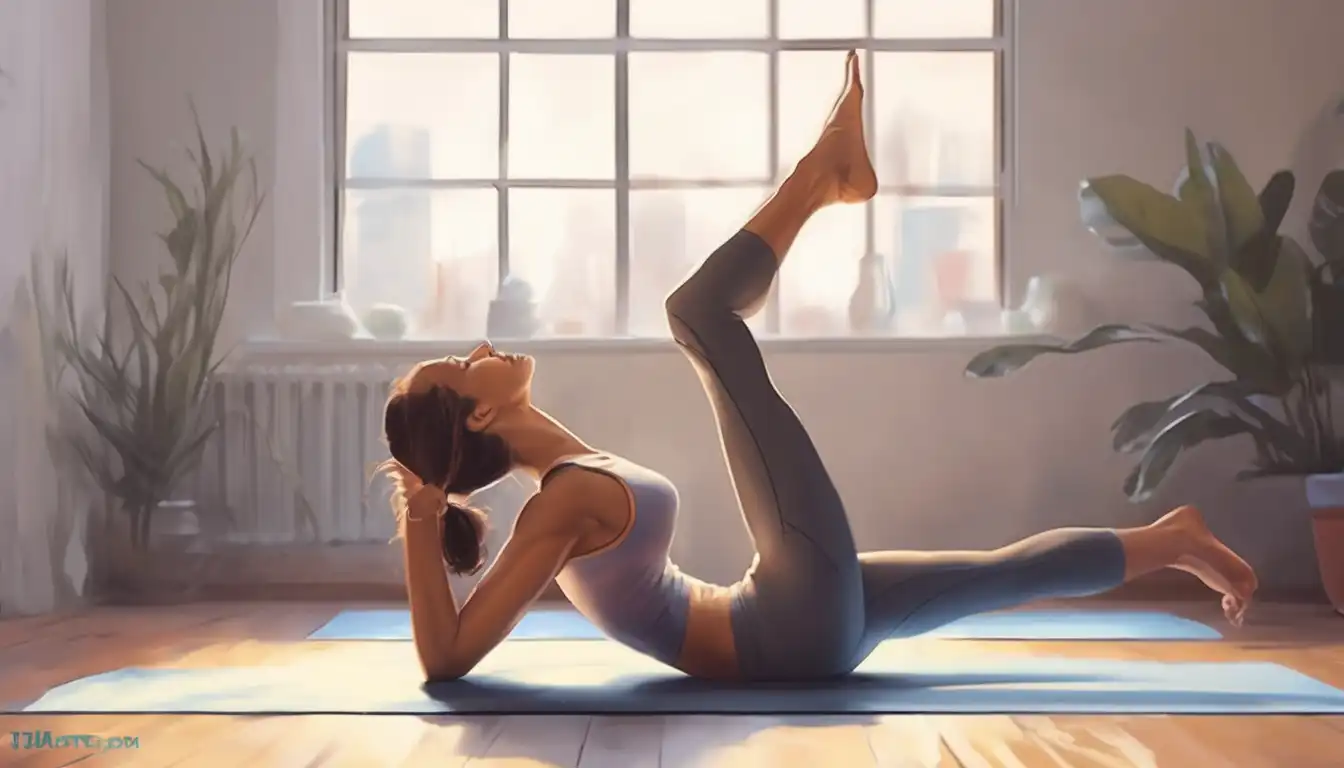Unlock Your Body's Potential: Essential Stretches for Flexibility and Relaxation
In today's fast-paced world, maintaining flexibility and finding moments of relaxation are more important than ever. Whether you're an athlete looking to improve performance or someone seeking relief from daily stress, incorporating the right stretches into your routine can transform your physical and mental well-being. This comprehensive guide covers the most effective stretches that target major muscle groups while promoting deep relaxation.
Why Flexibility Matters for Overall Health
Flexibility isn't just for gymnasts and dancers—it's a crucial component of everyday health. Improved flexibility enhances joint mobility, reduces injury risk, and alleviates muscle tension. When combined with relaxation techniques, stretching becomes a powerful tool for stress management and mental clarity. Regular stretching can improve posture, increase blood flow, and even boost your mood by releasing endorphins.
Pre-Stretching Preparation: Setting the Foundation
Before diving into specific stretches, proper preparation is essential. Always warm up with 5-10 minutes of light cardio activity like walking or jogging in place. This increases blood flow to your muscles, making them more pliable and reducing the risk of injury. Create a calm environment with comfortable clothing and a non-slip surface. Remember to breathe deeply throughout each stretch—this oxygenates your muscles and enhances the relaxation response.
Upper Body Stretches for Tension Relief
Neck and Shoulder Release
Begin seated or standing with proper posture. Slowly tilt your head toward your right shoulder, using your right hand to gently deepen the stretch. Hold for 30 seconds, breathing deeply into the tension. Repeat on the left side. This stretch targets the trapezius and levator scapulae muscles, which commonly hold stress from computer work and poor posture.
Chest Opener Stretch
Stand in a doorway with elbows bent at 90-degree angles and forearms resting on the door frame. Step forward gently until you feel a stretch across your chest and shoulders. Hold for 30-45 seconds, focusing on deep breathing. This counteracts the forward hunch many develop from sitting at desks and using mobile devices.
Core and Back Flexibility Exercises
Cat-Cow Stretch
Start on hands and knees with wrists under shoulders and knees under hips. Inhale as you drop your belly, lift your chest and gaze upward (Cow position). Exhale as you round your spine, tucking your chin to chest (Cat position). Flow between these positions for 10-15 repetitions. This dynamic stretch improves spinal mobility and relieves back tension.
Child's Pose
From hands and knees, sit back onto your heels and fold forward, resting your forehead on the floor with arms extended. Hold for 1-2 minutes, focusing on releasing tension in your lower back. This restorative pose is excellent for calming the nervous system and stretching the hips, thighs, and ankles.
Lower Body Flexibility Boosters
Hamstring Stretch
Sit on the floor with one leg extended and the other bent with foot against inner thigh. Hinge forward from your hips toward your extended foot, keeping your back straight. Hold for 30 seconds per side. Tight hamstrings contribute to lower back pain and limited mobility.
Hip Flexor Lunge
Kneel on one knee with the other foot forward, creating 90-degree angles at both knees. Gently push hips forward until you feel a stretch in the front of your hip. Hold for 30 seconds per side. This is particularly beneficial for people who sit for extended periods.
Butterfly Stretch
Sit with soles of feet together and knees out to sides. Hold your feet and gently press knees toward floor with elbows. Lean forward slightly to deepen the stretch in your inner thighs and groin. Hold for 45-60 seconds.
Full-Body Relaxation Sequences
Standing Forward Fold
Stand with feet hip-width apart, exhale as you hinge at hips and fold forward. Let your head hang heavy and grab opposite elbows. Sway gently side to side to release tension in your spine and hamstrings. Hold for 1 minute.
Supine Spinal Twist
Lie on your back with knees bent. Drop both knees to one side while turning your head opposite. Extend arms out in T-position. Hold for 1 minute per side, allowing your body to sink into the stretch. This releases tension throughout your entire back.
Creating Your Daily Stretching Routine
Consistency is key when improving flexibility. Aim for 10-15 minutes of stretching daily, or 20-30 minutes 3-4 times weekly. Morning stretches can energize you for the day, while evening stretches promote better sleep. Listen to your body—never push to the point of pain. Gradual progression yields sustainable results.
Breathing Techniques for Enhanced Relaxation
Combine your stretches with mindful breathing. Try the 4-7-8 technique: inhale for 4 counts, hold for 7, exhale for 8. This activates the parasympathetic nervous system, deepening relaxation benefits. Proper breathing can transform stretching from mere physical exercise into a meditative practice.
Common Mistakes to Avoid
Avoid bouncing during stretches (ballistic stretching), which can cause muscle tears. Don't hold your breath—continuous oxygen flow is crucial. Never compare your flexibility to others; focus on your personal progress. Ensure you're stretching muscles, not joints, and maintain proper alignment throughout each movement.
When to Stretch for Maximum Benefit
The best time to stretch is when your muscles are warm—after light activity or a warm shower. Many people find combining stretching with other wellness practices like meditation or yoga enhances overall benefits. Consider integrating these stretches into your existing fitness routine for comprehensive results.
Progress Tracking and Long-Term Benefits
Keep a simple journal to track your flexibility improvements. Note how stretches feel initially versus after several weeks. Within 4-6 weeks of consistent practice, you'll likely notice increased range of motion, reduced muscle stiffness, and improved relaxation response. These benefits compound over time, contributing to better overall health and wellness.
Remember that flexibility and relaxation are journeys, not destinations. Be patient with your body and celebrate small victories. Whether you're seeking relief from physical tension or mental stress, these stretches offer a accessible path to greater comfort and peace in your daily life.
